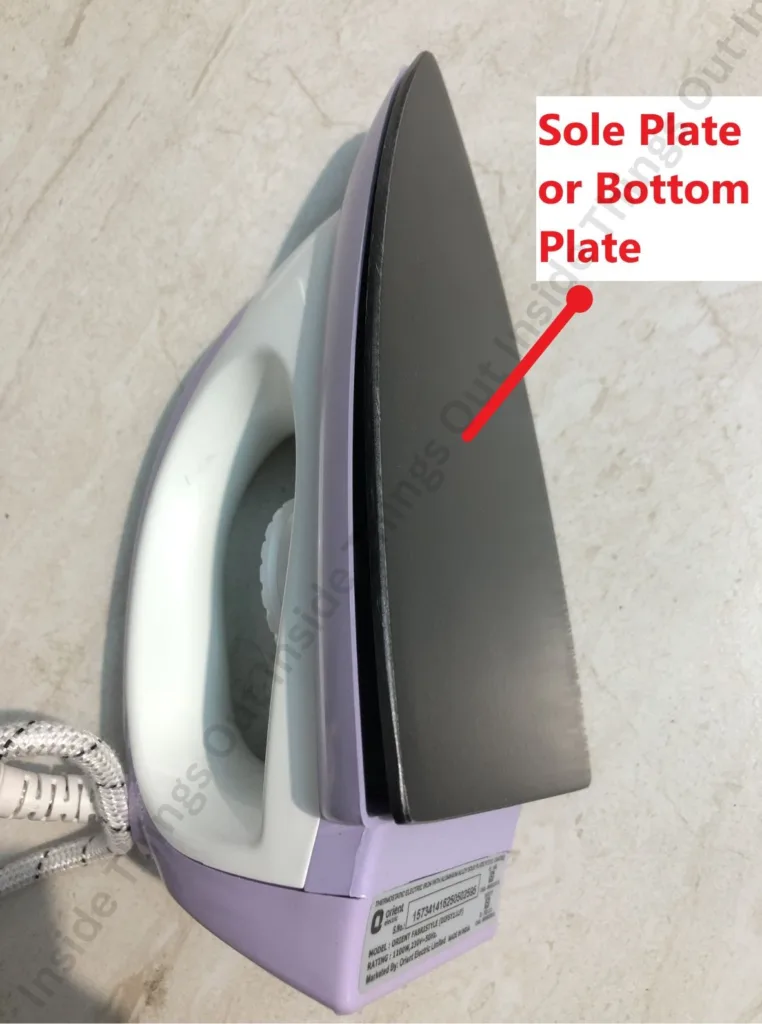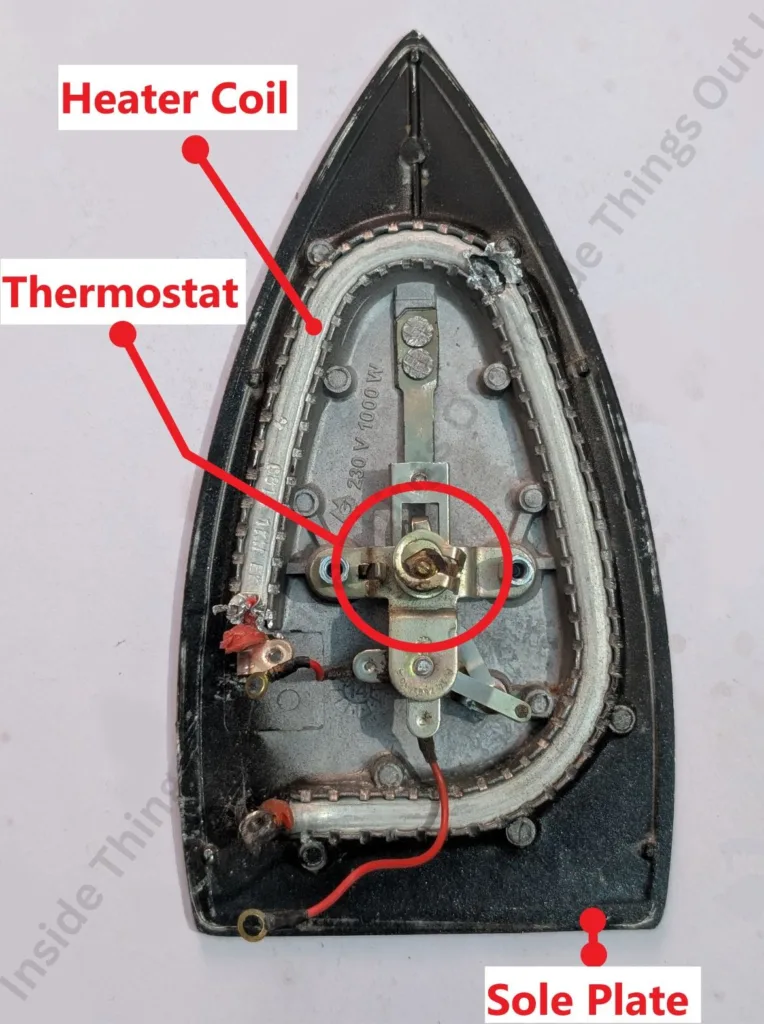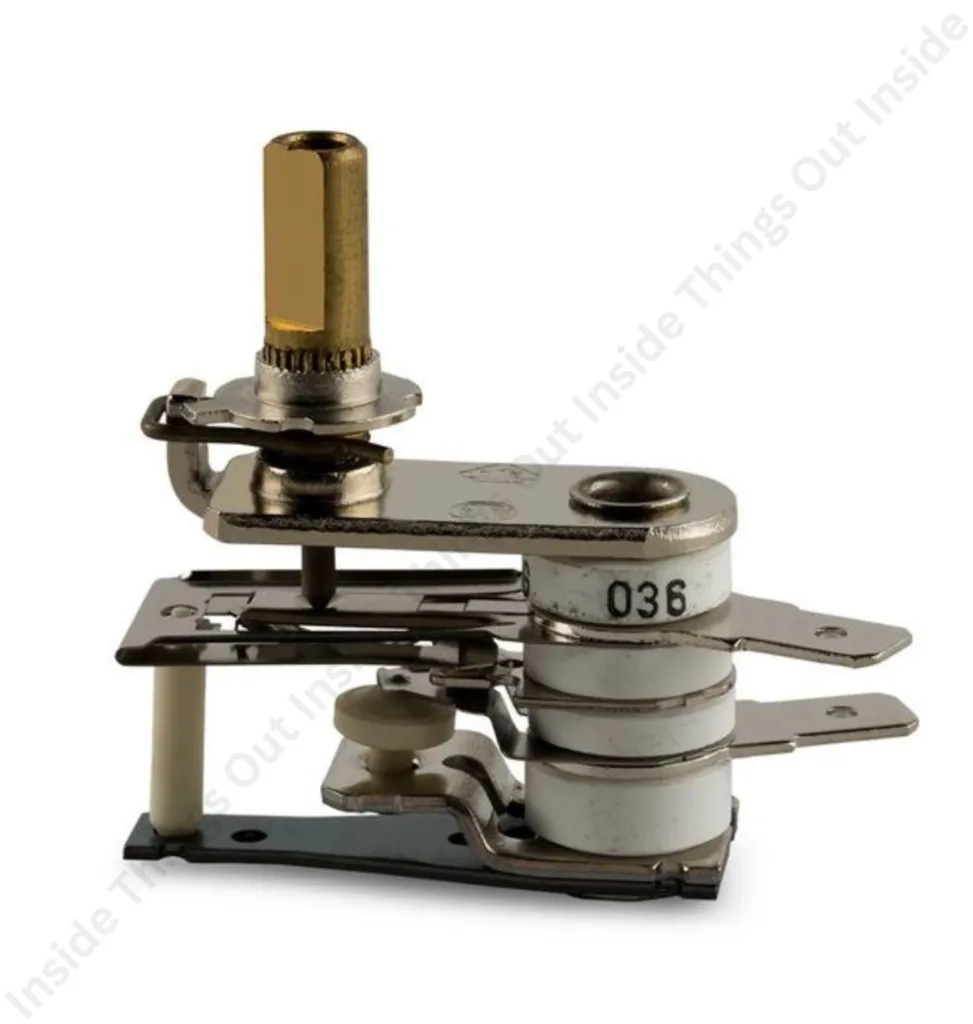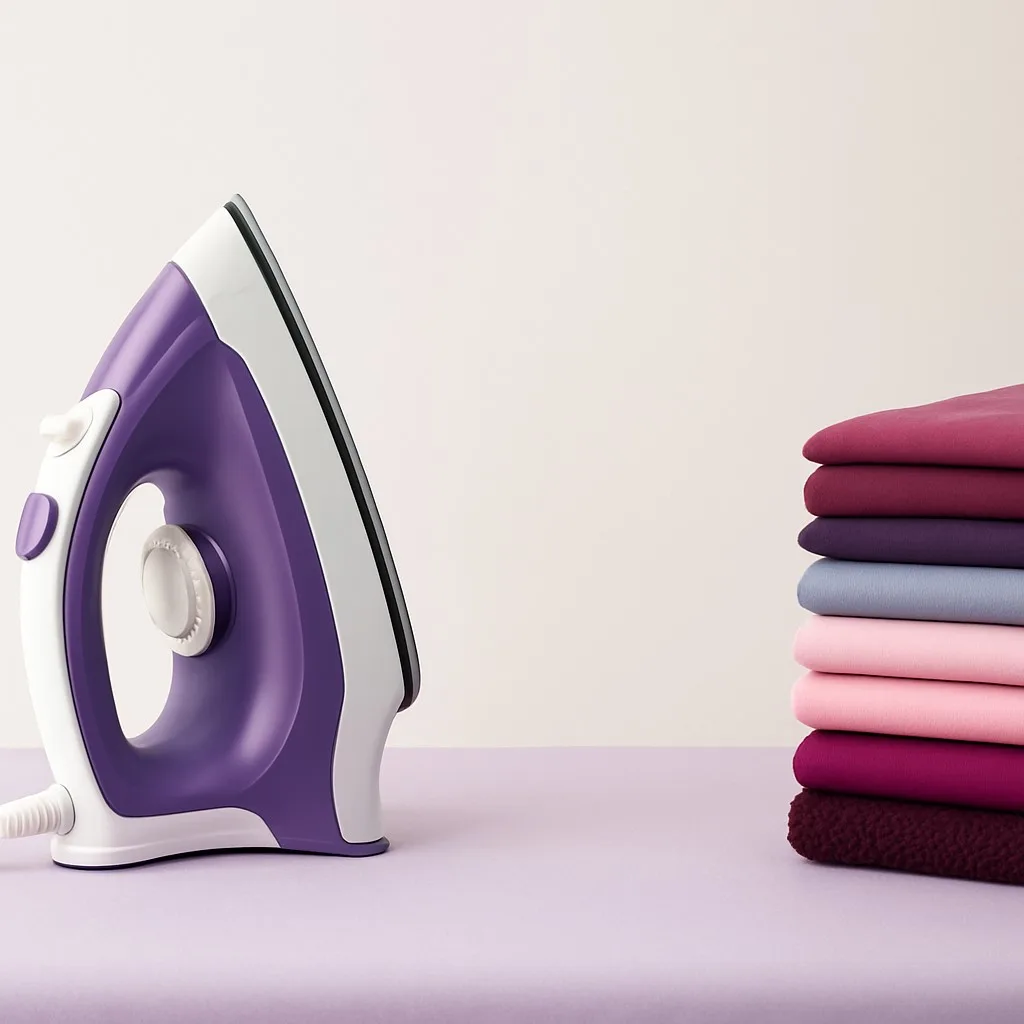The iron on cloth has been subject to great developments throughout the centuries as a means of removing wrinkles on cloth. It can be traced to ancient china where hot coals were pressed with metal pans to make the garments. Through Europe, the idea evolved into heavy flat irons which needed reheating. The next significant advance followed in 1882 when an electric flatiron was patented by Henry W. Seeley. It took a long time to heat and weighed almost 15 pounds but it was the start of modern ironing machinery. Early electric irons did not have a control of temperature, and introduction of thermostatically controlled electric irons could solve this shortcoming in the 1920s. Incorporation of steam features added efficiency to the improved efficiency ending up to the now advanced steam and smart irons. Below are the parts of electric Iron & its functions:

Detailed Description of Electric Iron Parts & Functions:-
1) Handle
Description: The top section of the iron uses heat resistant plastic/polymer that makes the user handle the iron, and move it over cloth safely.
Function: It gives a good comfortable and insulated grip, which protect the hands against heat.
2) Thermostat Control Knob
Description: A knob which is round and turning and is usually near the handle and may be marked with the name of the type of fabric such as Silk, Cotton or Wool or otherwise with the temperature level.
Function: The user has a chance to adjust the heating temperature of the iron to the type of fabric being ironed. On the inside, it modifies the thermostat.
3) Power Cord
Description:A flexi ble, heat-resistant insulated wire that connects the iron to a power outlet.
Function: Carries electrical current to the heating element inside the iron.
4) Pilot Light (Indicator Light)
Description: A small light signal (most commonly red or orange) that switches on as the iron heats up, and switches off after it reaches the desired temperature.
Function: Assists the user with the knowledge on whether the iron should be used or is still heating.
5) Soleplate (Bottom Plate)
Description: The metal surface is metallic, flattened, and most often made of aluminum or stainless steel, non-stick, or ceramic coated.
Function: This is the one that directly touches clothes to supply heat and thus gets rid of wrinkles.


6) Heating Element (Heater Coil)
Description: A piece of resistance wire (usually nichrome) wound in the iron, directly above the soleplate.
Function: Transfers electric energy into heat and heats the soleplate to the necessary temperature.
7) Heel Rest/Stand
Description: The flat backdrop of the iron so that it can stand on being upright and safe.
Function: It keeps the hot soleplate away touching surfaces before or after the use to prevent any burns or destruction.
8) Body/Housing
Description: The outer covering of the iron, typically made of heat-resistant plastic.
Function: Encases all internal components and provides a safe, cool-touch surface for handling.
9) Thermostat
Description: An iron-encapsulated mechanical switch with some form of temperature sensitive, typically a bimetallic strips.
Function: It turns the power off to the heating element when the soleplate reaches the desired temperature, and then turns it on again, when the temperature cools, keeping the level of heat constant.

10) Cover Plate
Description: The inner parts covered with a metallic or heat resistant plastic plate that holds the thermostat dial in place.
Function: It secures internal elements in aid of external governance.
11) Pressure Plate
Description: A metal plate fixed inside the iron that helps to transfer the heat of the heating element to the soleplate evenly. It also acts as structural support, ensures even pressure contact with cloths and shields internal parts.
Function: It spreads heat uniformly, supports the soleplate and heating element, maintains ironing pressure and also adds internal safety and protection.

Optional Additional Parts (in Some Irons)
- Thermal Fuse — A protective to shut off current in the event of failure of the thermostat and with the temperature rising to an unsafe degree.
- Cord Strain Reliever — Prevents wear and tear at the point where the cord enters the iron.
- Spray Button & Water Tank (in Steam Irons) — For spraying mist on clothes (not present in dry irons like yours).
If you have any questions, or comments, or corrections, please let me know below.
Thanks for reading!

